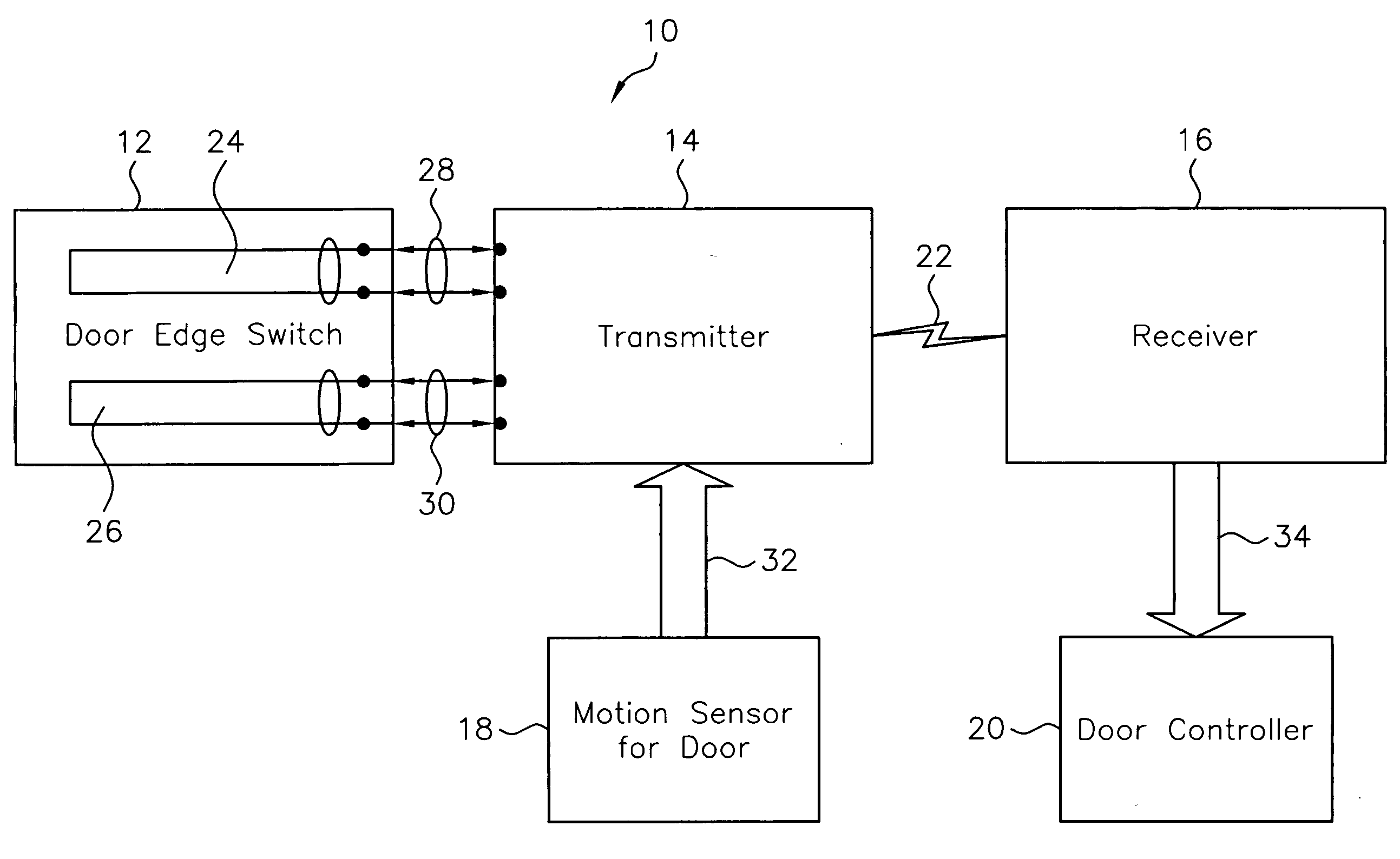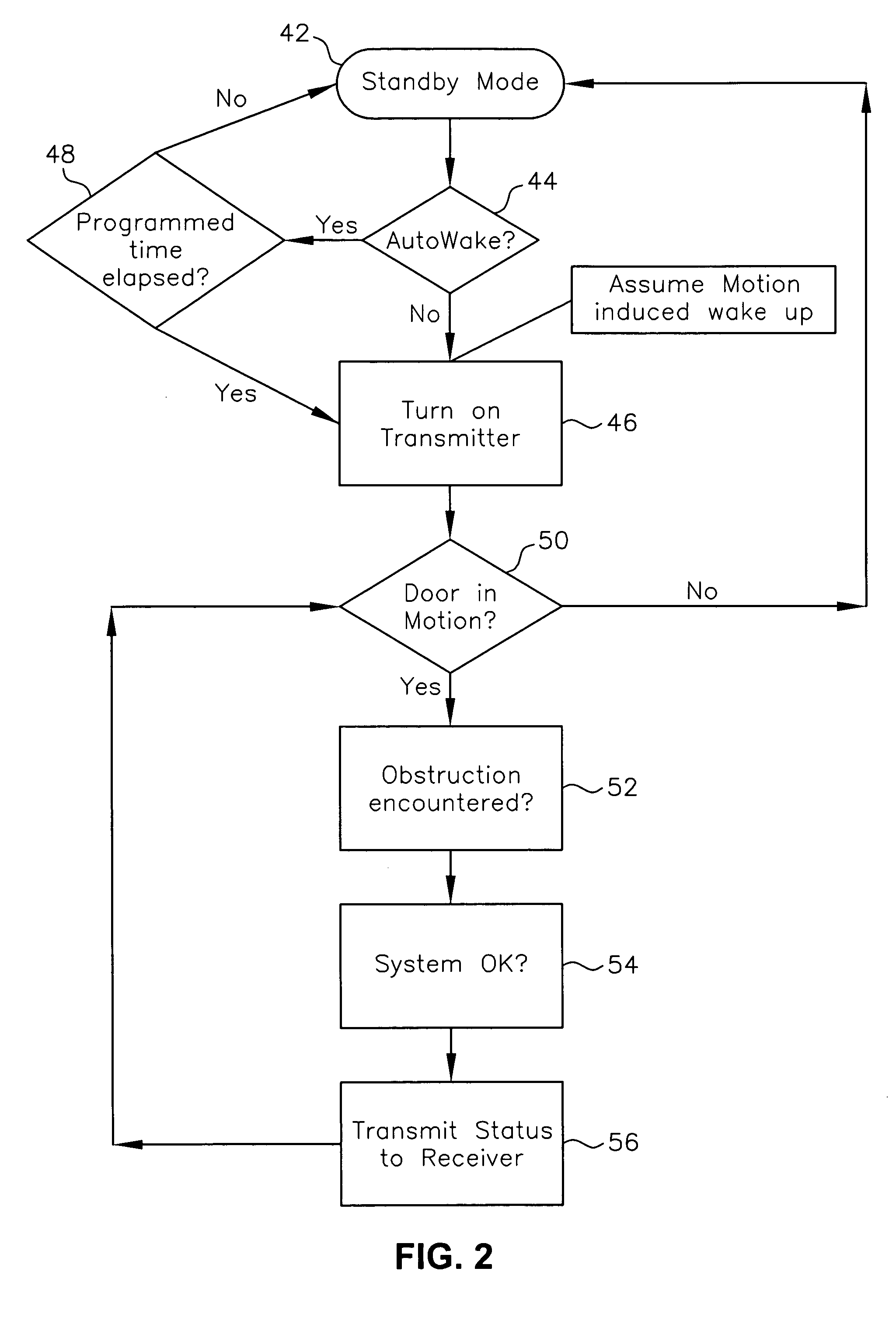Monitored transmitter and receiver system and method for safety devices
a transmitter and receiver technology, applied in the field of door safety systems, can solve the problems of affecting the operation of the system, placing considerable physical wear and tear on the conductor, and the lack of such an important combination of features in the system disclosed in the prior ar
- Summary
- Abstract
- Description
- Claims
- Application Information
AI Technical Summary
Benefits of technology
Problems solved by technology
Method used
Image
Examples
Embodiment Construction
[0025] The following is a detailed description of the preferred embodiment of the Radio Frequency (“RF”) link system for an automatic door safety edge. The description is not intended to limit the scope, applicability or configuration of the invention in any way. However, the following description does provide a convenient illustration for implementing a preferred embodiment of the invention. Upon review of the following description it will occur to those skilled in the art that various changes may be made to the function and arrangement of the elements described in the preferred embodiment without departing from the spirit or scope of the invention as set forth herein and in the appended claims.
[0026] Referring now to FIG. 1, a block diagram of the entire system 10 is presented. Door edge switch 12 is a membrane type switch which utilizes a door edge safety sensor in the present invention, mounted on the lower edge of an overhead garage door or some other rolling door or movable d...
PUM
 Login to View More
Login to View More Abstract
Description
Claims
Application Information
 Login to View More
Login to View More - R&D
- Intellectual Property
- Life Sciences
- Materials
- Tech Scout
- Unparalleled Data Quality
- Higher Quality Content
- 60% Fewer Hallucinations
Browse by: Latest US Patents, China's latest patents, Technical Efficacy Thesaurus, Application Domain, Technology Topic, Popular Technical Reports.
© 2025 PatSnap. All rights reserved.Legal|Privacy policy|Modern Slavery Act Transparency Statement|Sitemap|About US| Contact US: help@patsnap.com



